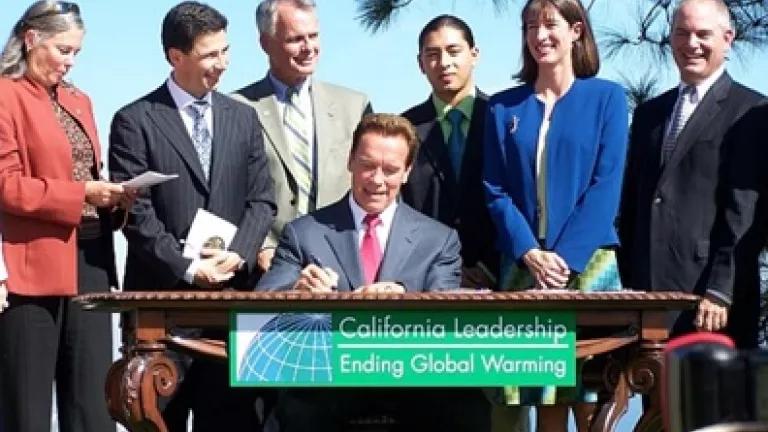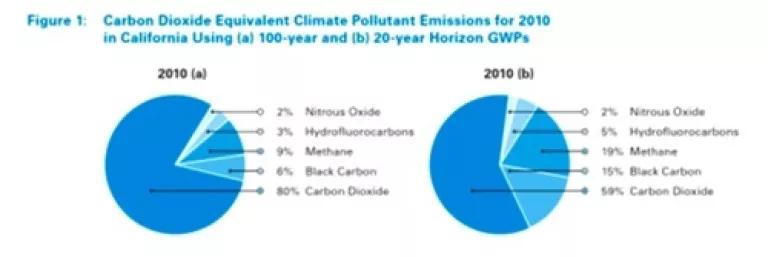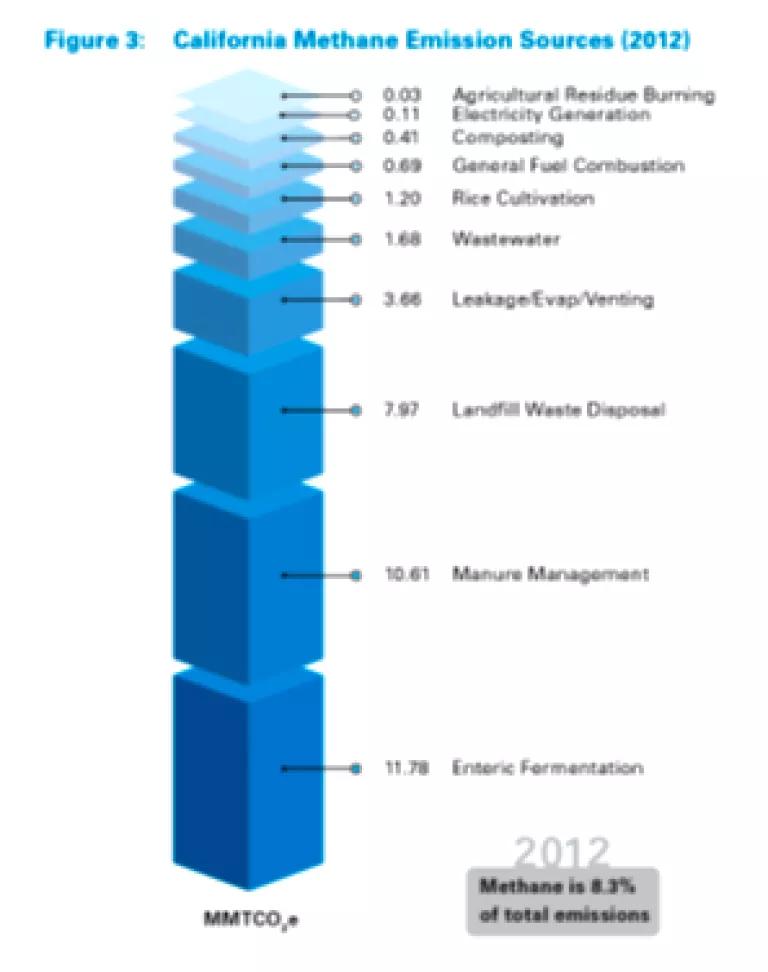California's Climate Leadership: Celebrating the Past and Looking to the Future (Next Up: Reining in Climate Super-Pollutants)

National and state leaders past and present will gather in Sacramento Monday to celebrate California’s track record of climate leadership and look to the future on how the Golden State can help set the stage for climate action globally.
Entitled “Global Climate Negotiations: Lessons from California,” the symposium will feature former Governor Arnold Schwarzenegger – who signed into law California’s 2006 landmark climate and clean energy law (AB 32) requiring the state to cut its climate pollution to 1990 levels by 2020 – and a star-studded lineup of prominent scientists, business leaders, celebrities, and California legislators.
Continuing the Legacy
With much less fanfare, the California Legislature last week took an important step to continue that legacy, passing a bill that directs the Air Resources Board to develop a comprehensive strategy by the end of next year to reduce climate pollutants with supercharged heat-trapping power. These pollutants, including methane and black carbon (a component of soot), are emitted from a variety of sources and remain in the atmosphere for shorter periods of time than carbon dioxide, the main contributor to global climate change. But pound for pound they have a much larger warming influence (or “global warming potential”).
As evidence continues to mount of the impact these super-pollutants are having in accelerating global climate change, last week’s vote offers a timely and encouraging signal that California is once again prepared to lead.
The legislation, Senate Bill 605, from Senators Fran Pavley (D-Agoura Hills) and Ricardo Lara (D-Huntington Park/Long Beach), has three main components. It directs the California Air Resources Board (ARB) to:
- Complete a statewide inventory of sources and emissions (a critical first step, as several recent analyses suggest that emissions of super-warmers like methane, for example, may be 30 to 70 percent higher than currently estimated);
- Identify and remedy any research or data gaps; and
- Develop necessary control measures, with an emphasis on those that provide relief to California communities already overburdened by air pollution, as short-lived climate pollutants like black carbon also exacerbate local air quality.
While ARB had committed to take action to reduce short-lived climate pollutants as part of the AB 32 Scoping Plan Update (undertaken every five years), the legislation affirms California’s commitment and holds ARB to a Jan. 1, 2016, deadline. The bill now moves to the desk of Governor Jerry Brown, who is expected to sign it into law in advance of the September 30th deadline.
California’s Climate Super-Pollutants
Measured on a 20-year horizon, short-lived climate pollutants make up nearly 40 percent of California’s greenhouse gas emissions.

And unlike most other climate-polluting sectors in California, which are seeing steady long-term reductions, that percentage is on the rise – HFC (hydroflurocarbon) emissions alone increased over 129 percent from 2000 to 2012. The legislation recognizes both the urgency and opportunity to rein in these super-climate forcers, including:

and gas extraction and distribution, and waste generation and processing. ARB has taken a number of steps to reduce methane emissions, including mandatory controls on landfills and incentives to capture and destroy methane emissions from livestock, but more action is needed – particularly to control methane leaks from oil and gas operations, which has skyrocketed in the United States in the wake of the shale gas boom. Last week, ARB kicked off a rulemaking process to develop methane control measures for the oil and gas industry.
- Black Carbon: Black carbon is a component of particulate matter emitted from burning fuels such as coal, diesel, and biomass. It is both a potent greenhouse gas and impacts local air quality. While California has achieved tremendous progress in reducing black carbon emissions (an estimated 70 percent decrease between 1990 and 2010), significantly more reductions will be required to meet federal air quality standards and keep climate warming in check.
- HFCs: Hydrofluorocarbons are synthetic gases used in refrigeration, air conditioning, and other industrial products produced primarily as substitutes for ozone-depleting substances being phased out under the international treaty known as the Montreal Protocol. Absent additional control measures, ARB projects HFC emissions will more than double by 2050, accounting for nearly half of California’s long-term emissions target.
California’s (Ongoing) Leadership
Monday’s symposium will bring together the diverse array of interests and expertise that have propelled California to the forefront of climate policy and nurtured its success. While not everyone agrees (the oil industry is renewing is campaign to avoid paying for its carbon pollution, even propping up purported “grassroots organizations” to lobby against AB 32 that are in fact funded by Big Oil, according to an article this week by Bloomberg Businessweek), the state’s latest legislative achievement sends a signal that California is yet again ready to pave the way.
Happily, California is not alone: in June 2013, the United States and China agreed to phase down the production and consumption of HFCs under the rubric of the Montreal Protocol; and in March 2014, as part of the President’s Climate Action Plan, the Obama Administration released a methane reduction strategy identifying actions to improve methane emission estimates and develop methane emission control measures.
As world leaders prepare to gather in New York at the end of September for the UN Climate Summit, setting the table for negotiations in Paris next year on a global climate accord, let’s hope California’s latest step forward produces the ripple effects that have so often followed before.
